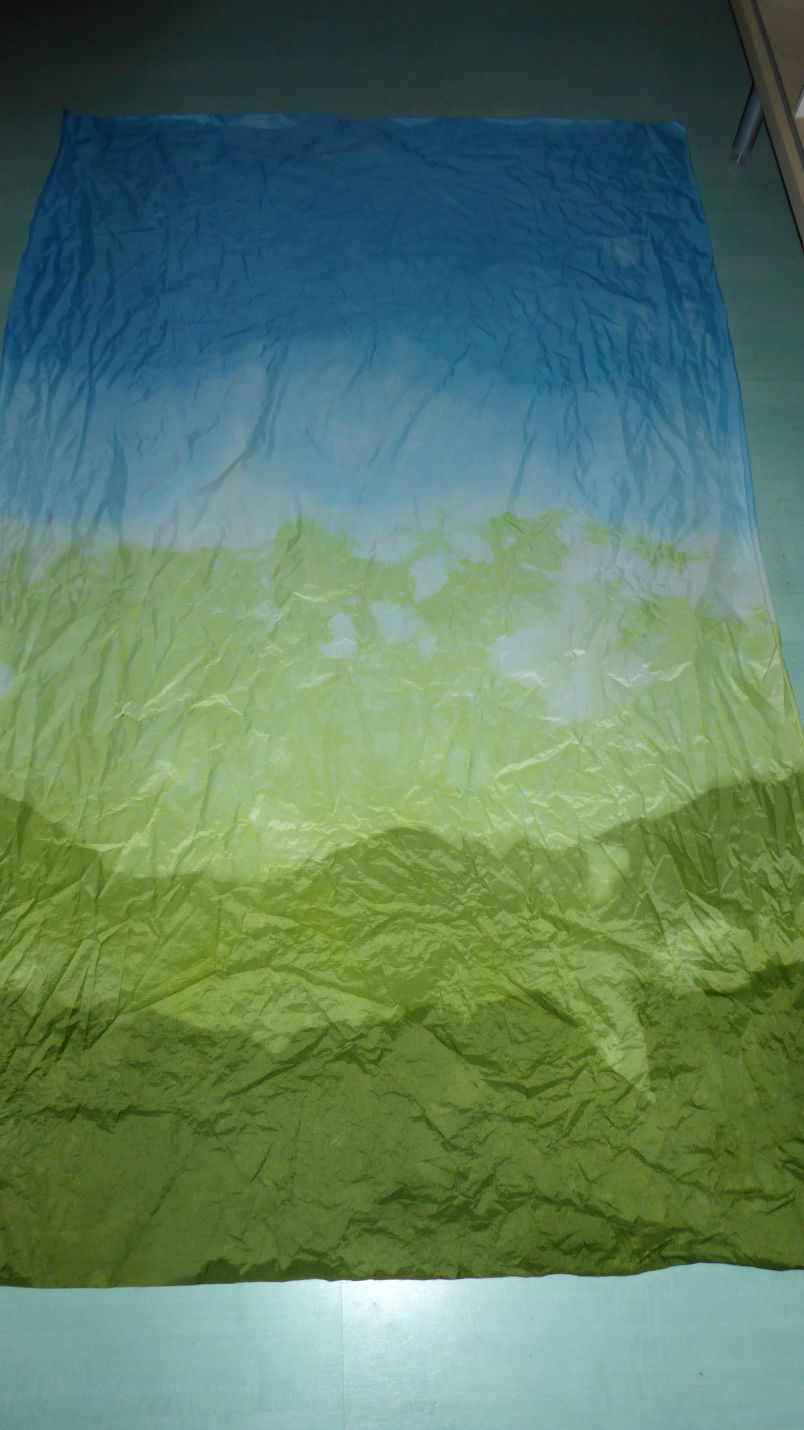Dyeing Technique
I am often asked whilst flying my kites, "Is it painted?" and when I come to explain that its not and that all the colours are obtained by dyeing, I nearly always get the reply - "but I thought you couldn't dye ripstop". Well you can, it's quite easy and as some of my dyed kites are now over thirty years old and still going strong it obviously does little or no damage to the fabric.
Here is a short video showing the techniques described below.
The Dye
The dye I use is Dylon multi-purpose dye, the Dye Shop is a good source for this or it can be found on Ebay. It comes in a range of colours and one sachet (or 5g) would be enough to dye about 5 metres of ripstop. Dylon only works on Nylon, if using Polyester then use I-Dye Poly instead, this can also be used for Nylon. When choosing your colour you must remember that the ripstop probably takes up about 90% of the colour, so if the tin shows a scarlet you will get a red but not as deep as a scarlet. Of course you can always go for multiple dyeing which deepens the colour.
Finishing
Whilst the material is wet iron with a high setting and that's all there is to it. You can experiment with tie dye, batik (yes even this works, and no the wax doesn't melt the ripstop), multi dyeing with different colours, using coloured ripstop as the base for dyeing etc, etc. It really is just a case of experimenting. Some warnings. Wear gloves to prevent the dye staining your skin. Keep dyeing utensils and pans just for dyeing. If you like me have a white acrylic sink keep the dye well away - it is very difficult to remove! My last kite ended up being rinsed down our well to avoid a blue sink!

The Process
For the process of dyeing I use a large curry saucepan (10L) (now dyed an interesting colour due to repeated use) and a pair of wooden tongs. There is no need to pre-wash the ripstop as unlike natural fibres there will be no colour loss or shrinkage. Make up the dye solution as per the instructions on the tin/sachet (basically a couple of pints of hot water and a couple of teaspoons of salt), add the ripstop and top up with more hot water. Then gently simmer the ripstop - about 80C. it is important not to boil the dye solution as the ripstop will definitely not like it. You can keep the ripstop in for as long as you like but after about 15 minutes there will be no more colour uptake. Rinse the material under copious amounts of cold water. It is important to make sure that there is no more dye solution on the surface because if you use dyed ripstop for a kite AND you kite gets wet AND there is some dye left on the surface it will run, I know I've done it!.
Updates
Updates to the above. Polyester (shiny) material does not dye using this Dylon Multi-Purpose. Dylon have also stopped making the small round tins of dye but they are often available on Ebay. The replacement hot dye does not dye ripstop at all however, I-Dye Poly - the new multipurpose dye from Dylon works well using the same method.
